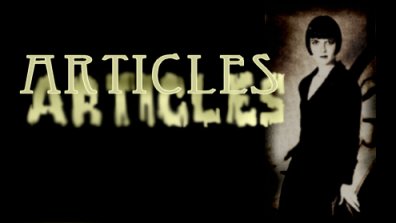|
|
|
|
|
|
|
|
|
|
FoolQuest.com Web Archive |
| ||||
|
|
|
|
|
|
|
|
|
|
|
|
|
|
FoolQuest.com Web Archive |
| ||||
|
|
|
|

|
Jules Verne is rightly considered the father of the genre and of Science Fiction as a whole. An unabashed jingoist of technology, he used our scientific development to open the door to wonder and adventure that heretofore was the domain of sheer fantasy. In so doing, he treated us to a trip Around the World in 80 Days, going From Earth to the Moon, and even 20,000 Leagues Under the Sea. Some of his tales, like Journey to the Centre of the Earth and Around the World in 80 Days, prefigured the contemporaneous genre of Imperialist Adventure.
The dark side of Scientific Romance is exemplified by the other famous father of Science Fiction, H.G.Wells. Wells himself noted that the primary difference between himself and Verne was that Verne wanted to write stories about technology and he wanted to write stories about people. Many of Wells' stories were cautionary tales about technology and society that took existing developments to their most extreme, such as the social stratification of The Time Machine or the more relevant than ever treatise on creating life in our own image, The Island of Dr. Moreau. Perhaps his most famous work, War of the Worlds, undermined the whole belief in the supremacy of technology. Wells was a man ahead of his time, regarding technology with a realism ("a cynic is only someone who sees things the way they really are") that wouldn't be matched until the post-atomic era.
For years, children and adults had to rest with the visions in their head and the static illustrations of these novels to envisage these fantastic worlds. But the dawn of the moving picture enabled them to be seen in living form on the silver screen. In fact, many of the earliest silent films were inspired by these tales, most notably those by master Georges Melies. A magician by trade, he saw in film the opportunity to extend the reach and scope of his stagework. Using an apparatus of miniatures, camera tricks, and trap doors, he brought us from the bottom of the sea to the heights of the atmosphere, from heaven down to the depths of hell. He also provided one of the most famous images in all of film history: the man in the moon. Melies, a frenchman, was greatly inspired by another frenchman, Jules Verne.
Unfortunately, all good things must come to an end. The literary genres of Scientific Romance and Imperialist Adventure effectively died with the end of Imperialism, even as some of their most notable stories, like The Lost World and Tarzan, were so late as to be naught but swan-songs. In the same year that The Lost World would be translated to film, the first true Science Fiction would also be filmed: Fritz Lang combined a dystopian futuristic setting, German Expressionism, and the screen's first robot, to create the first sci-fi film, Metropolis.
|
Perhaps noone influenced film, at least genre film, as much as Georges Melies. The French master of fantasy cinema, his short features would pioneer film techniques still in use today. To find out more about Melies, read this article.
The following is an evergrowing list of Scientific Romance films reviewed here on Silent Movie Monsters. Click on the title to be taken to the article. 20,000 Leagues
Under the Sea (1916)
Another motion picture innovator worthy of standing shoulder-to-shoulder with Georges Melies, is Willis O'Brien, who's invention of stop-motion photography made The Lost World and eventually the Pulpish King Kong possible. Read more about him here.
|
To Silent Movie
Monsters articles